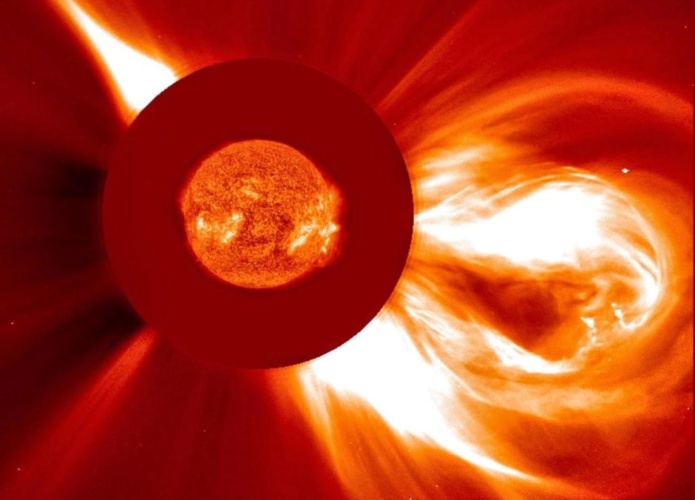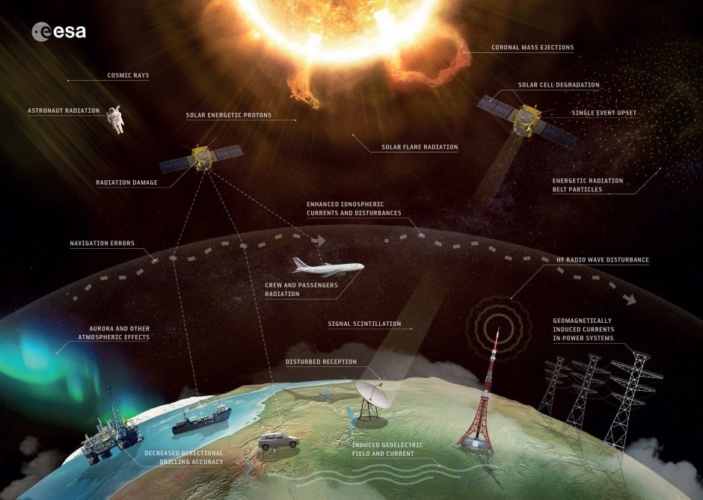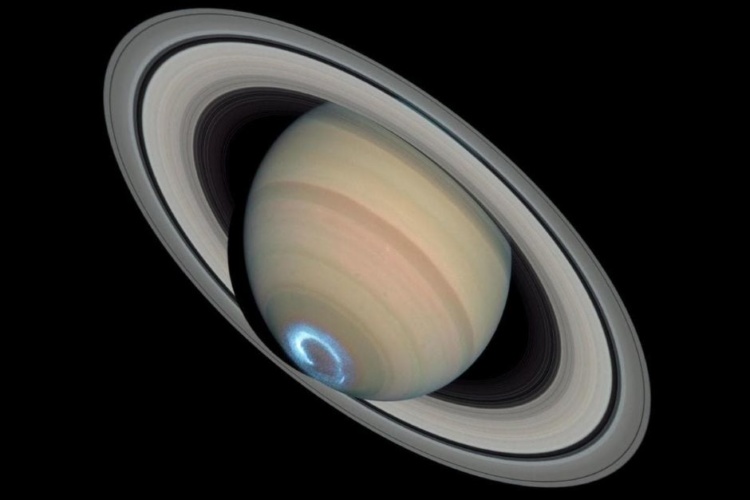
The risks of this occurring during an extreme space weather event might seem remote, but in fact this is a very real possibility. Such an event is one of the most likely (a rating of 4 out of 5 to occur in the next five years) and highest impacting (3 out of 5) events on the UK’s National Risk Register of Civil Emergencies.
Airbus UK to lead space weather warning project
Space weather is produced by our Sun – an interesting, complex, powerful, rapidly evolving object which can have a major impact on our technological-reliant modern society. It emits an almost constant source of near-infrared and optical radiation but there is considerable variability at X-ray and radio wavelengths. During these periods of variability highly charged particles are emitted through its solar wind and through gigantic, energetic eruptions called coronal mass ejections.
We refer to this broad range of phenomena as ‘space weather’. If the event is Earth-impacting (geoeffective) then it interacts with our magnetic field which gives rise to the ever photogenic northern and southern lights (aurora borealis/australis). However the consequences can also be much more severe including detrimental effects to the electricity grid, satellites, avionics, air passengers, signals from satellite navigation systems and mobile telecommunications. Whilst extreme space weather events are low-probability, they are high impact and have been identified as a risk to the world economy and modern society.

In the most severe scenario, the estimated impact on the UK economy is up to £16bn due to the knock-on effects on businesses and national infrastructure. However, such an event would not be limited to only the UK but would be felt worldwide. Understanding how often such extreme events occur is of great importance to feed into mitigation plans and strategies.
The most extreme geomagnetic storm on record occurred in September of 1859, the so called 'Carrington event'. Whilst impacts were observed around the globe (such as aurora in the Caribbean) electrical telegraphy was still only in its infancy, so our understanding of the impacts on modern technology are primarily from theoretical studies (well summarised in a report by the Royal Academy of Engineering on the impacts of space weather published in 2013).
Whilst there are varying estimates of the 'return time' of an extreme, Carrington-type, storm, most agree they likely occur approximately once every 100 years. This equates to a one per cent chance every year. However, by their very nature extreme events are rare and with few observations the uncertainties associated with these estimations can be very large.
We can use rigorous statistical techniques to further refine estimates of the long-term probability of extreme space weather, however the elusive Holy Grail of current space weather research is accurate and actionable weather forecasting.

Image from the Hubble Space Telescope, credit: NASA
At the University of Birmingham we’re leading research within a £20m national programme funded by UK Research and Innovation to help improve the accuracy of the round-the-clock monitoring of space weather currently provided by the Met Office for government, critical national infrastructure providers and the public.
Underpinning this research is data modelling technology developed at the University of Birmingham which is capable of predicting space weather with unprecedented speed and accuracy, monitoring the density, winds and temperatures of chemical species in the Earth's atmosphere and triggering warnings when there are likely to be impacts on services and infrastructure.
Space weather forecasting is a major challenge for a number of reasons, not least because we do not completely understand the underlying physics which describe the system. The number and global spread of observations is also sparse and geophysical timescales vary hugely, from the 11 year solar cycle (changes in the Sun’s activity levels) to solar flare impacts which are felt minutes after release from the Sun.
Whilst space weather forecasting is a young science, it is developing rapidly and is of critical importance. Technology has come to our rescue during the COVID-19 pandemic, but extreme space weather is a threat of similar likelihood which could render the same technology inoperable and we must improve our capability to forecast it.
Dr Sean Elvidge is a lecturer in Space Environment, University of Birmingham










Water Sector Talent Exodus Could Cripple The Sector
Maybe if things are essential for the running of a country and we want to pay a fair price we should be running these utilities on a not for profit...